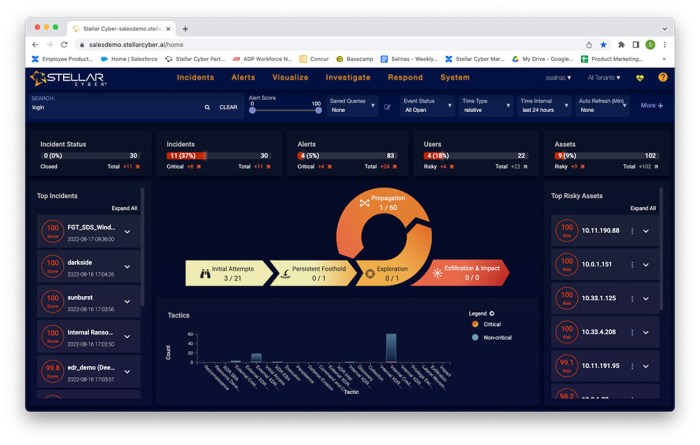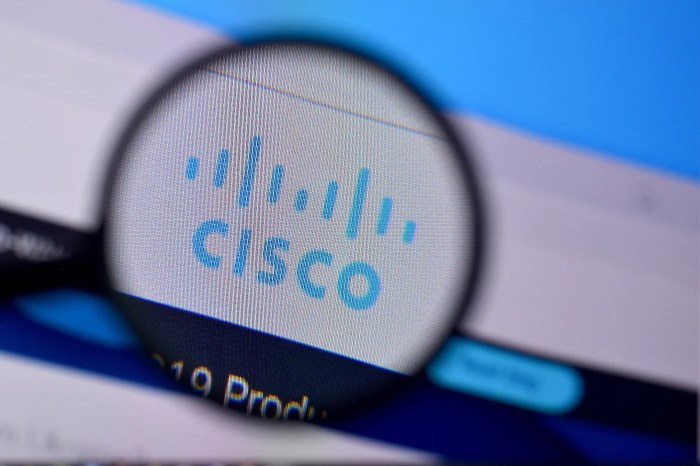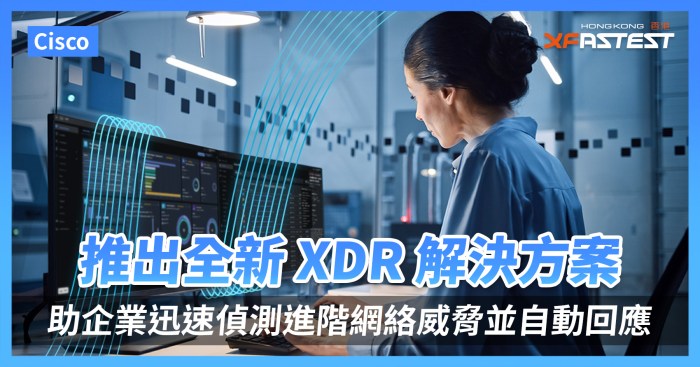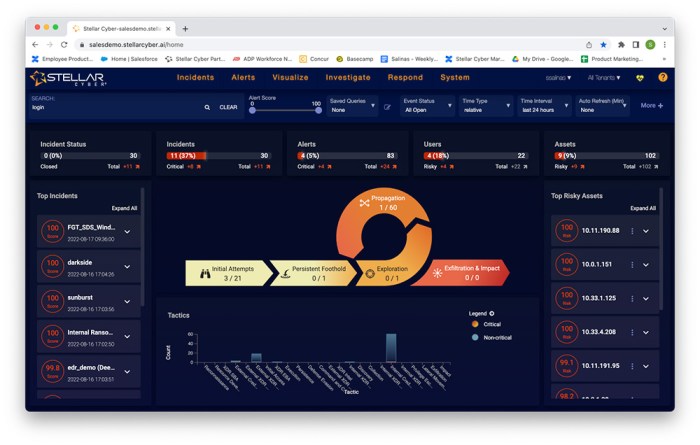
Cisco XDR Platform Availability: Ensuring Continuous Security
Cisco XDR platform availability is a critical aspect of any organization’s security strategy, ensuring uninterrupted protection against evolving threats. This platform provides a comprehensive approach to threat detection and response, offering a range of features designed to minimize downtime and maintain continuous security operations.
The Cisco XDR platform integrates seamlessly with other Cisco security solutions, providing a unified view of security events and enabling faster and more efficient incident response.
By leveraging advanced technologies such as machine learning and automation, Cisco XDR empowers security teams to proactively identify and mitigate threats before they can impact critical systems and data. The platform’s availability features are crucial for organizations that rely on continuous operations, ensuring that security is not compromised even in the face of unexpected events.
Cisco XDR Platform Overview

The Cisco XDR platform is a comprehensive security solution that helps organizations detect, investigate, and respond to threats across their entire IT infrastructure. It provides a unified view of security data from various sources, including endpoints, networks, cloud, and applications, enabling organizations to gain a holistic understanding of their security posture and quickly respond to incidents.
Key Functionalities of the Cisco XDR Platform
The Cisco XDR platform offers a range of functionalities that help organizations enhance their security posture and effectively manage security incidents.
- Threat Detection:Cisco XDR uses advanced analytics and machine learning to detect suspicious activities and potential threats across different security domains. It leverages data from various sources to identify patterns and anomalies that indicate malicious behavior.
- Incident Investigation:Cisco XDR provides a centralized platform for investigating security incidents. It enables security analysts to correlate data from different sources, reconstruct attack timelines, and identify the root cause of incidents.
- Threat Response:Cisco XDR offers automated and guided response capabilities to help organizations quickly contain and remediate threats. It can automatically block malicious traffic, isolate infected systems, and take other actions to mitigate the impact of attacks.
- Security Posture Management:Cisco XDR provides visibility into the security posture of the organization by analyzing security data and identifying vulnerabilities and misconfigurations. It helps organizations prioritize remediation efforts and improve their overall security posture.
Key Components of the Cisco XDR Platform
The Cisco XDR platform comprises several key components that work together to provide comprehensive security capabilities.
- Cisco SecureX:Cisco SecureX is the central platform for managing and orchestrating Cisco security solutions. It provides a unified view of security data, facilitates collaboration between security teams, and enables automated response actions.
- Cisco Umbrella:Cisco Umbrella is a cloud-based security service that protects organizations from internet-based threats. It provides DNS-layer security, web filtering, and other capabilities to prevent users from accessing malicious websites and downloading malware.
- Cisco AMP for Endpoints:Cisco AMP for Endpoints is an endpoint security solution that protects against malware, exploits, and other threats. It provides real-time threat detection, prevention, and remediation capabilities.
- Cisco Meraki SD-WAN:Cisco Meraki SD-WAN is a software-defined wide area network (SD-WAN) solution that provides secure and reliable connectivity for branch offices and remote users. It integrates with Cisco XDR to provide visibility into network traffic and detect threats.
- Cisco Firepower Threat Defense:Cisco Firepower Threat Defense is a network security platform that provides intrusion prevention, malware detection, and other security capabilities. It integrates with Cisco XDR to share threat intelligence and enable automated response actions.
Deployment Examples of Cisco XDR
The Cisco XDR platform can be deployed in various organizational settings, including:
- Small and Medium Businesses (SMBs):Cisco XDR can help SMBs enhance their security posture and manage security incidents without the need for extensive security expertise. Its automated capabilities and integrated solutions make it easy to deploy and manage.
- Large Enterprises:Large enterprises with complex IT infrastructures can leverage Cisco XDR to gain a holistic view of their security posture, detect and investigate threats across their entire environment, and respond effectively to incidents.
- Cloud-Native Organizations:Cisco XDR can be deployed in cloud environments to provide comprehensive security for applications and data hosted in the cloud. It integrates with various cloud platforms and provides visibility into cloud traffic and resources.
- Government Agencies:Government agencies face unique security challenges, and Cisco XDR can help them meet these challenges by providing advanced threat detection, incident response, and compliance capabilities.
Availability Features and Capabilities: Cisco Xdr Platform Availability

The Cisco XDR platform prioritizes continuous security operations by incorporating robust availability features. These features minimize downtime and ensure uninterrupted threat detection and response capabilities, enabling organizations to maintain a strong security posture even in the face of unexpected disruptions.
High Availability and Redundancy, Cisco xdr platform availability
High availability is crucial for ensuring that security operations are not interrupted by hardware or software failures. The Cisco XDR platform addresses this by employing a distributed architecture with multiple redundant components. This design ensures that even if one component fails, the system remains operational, preventing any significant downtime.
For example, if a primary database server goes down, a secondary server automatically takes over, ensuring continuous data access and threat detection.
Data Backup and Recovery
Data backup and recovery are essential for safeguarding valuable security information. The Cisco XDR platform offers comprehensive data backup and recovery capabilities. This includes regular backups of all critical data, such as threat intelligence, event logs, and configuration settings. In the event of a data loss or corruption, the platform can quickly restore data from backups, minimizing disruption to security operations.
Disaster Recovery
Disaster recovery planning is critical for ensuring business continuity in the event of a major disruption, such as a natural disaster or cyberattack. The Cisco XDR platform supports disaster recovery by allowing organizations to replicate their security environment to a secondary location.
This allows for rapid recovery of security operations in the event of a disaster, minimizing downtime and ensuring business continuity.
Scalability and Performance
As security needs evolve, organizations need a platform that can scale to meet growing demands. The Cisco XDR platform is designed to be highly scalable, allowing organizations to add new sensors, endpoints, and users without impacting performance. This ensures that the platform can handle increasing workloads and security challenges while maintaining optimal performance.
Comparison to Other XDR Solutions
Compared to other leading XDR solutions, the Cisco XDR platform stands out in its comprehensive approach to availability. Its distributed architecture, robust data backup and recovery capabilities, and disaster recovery planning features provide a high level of resilience, minimizing downtime and ensuring continuous security operations.
Deployment and Management Considerations

Deploying and managing the Cisco XDR platform effectively requires careful planning and consideration of various factors. This section Artikels key considerations for a successful implementation, including infrastructure requirements, integration with existing security systems, and the management tools available.
Deployment Steps
Deploying the Cisco XDR platform involves a series of steps that ensure a smooth transition and optimal performance.
- Pre-deployment Assessment:Begin by assessing your existing security infrastructure, including your network architecture, security tools, and data sources. Identify any potential integration challenges or data compatibility issues. This assessment helps determine the required resources and steps for successful deployment.
- Infrastructure Requirements:The Cisco XDR platform has specific infrastructure requirements, including sufficient computing power, storage capacity, and network bandwidth. Ensure your infrastructure meets these requirements to support data ingestion, analysis, and reporting.
- Data Source Integration:Integrate your existing security tools and data sources with the Cisco XDR platform. This step involves configuring data connectors and ensuring seamless data flow between your systems and the XDR platform. This allows the platform to collect and analyze data from various sources for comprehensive threat detection and response.
- Platform Configuration:Configure the Cisco XDR platform according to your organization’s security policies and requirements. This includes defining detection rules, setting up alerts, and configuring incident response workflows.
- Testing and Validation:Thoroughly test the deployed platform to ensure its effectiveness and validate its integration with your existing systems. This involves simulating real-world security incidents and evaluating the platform’s ability to detect, investigate, and respond to threats.
- Deployment and Monitoring:Deploy the Cisco XDR platform in a phased manner, starting with a pilot deployment and gradually expanding to cover your entire organization. Continuously monitor the platform’s performance, identify any issues, and make necessary adjustments to optimize its effectiveness.
Key Deployment Considerations
Several factors should be considered during the deployment process to ensure the Cisco XDR platform delivers the expected benefits.
- Infrastructure Capacity:Ensure your infrastructure can handle the increased data volume and processing demands of the Cisco XDR platform. This includes assessing your network bandwidth, storage capacity, and computing resources.
- Data Integration:Prioritize data integration from key security tools and sources, such as firewalls, intrusion detection systems (IDS), endpoint detection and response (EDR) solutions, and security information and event management (SIEM) systems. This ensures the platform receives a comprehensive view of your security posture.
- Security Policies:Align the Cisco XDR platform’s configuration with your organization’s security policies and best practices. This includes defining threat detection rules, configuring alerts, and establishing incident response procedures.
- User Training:Provide adequate training to security analysts and other relevant personnel on how to use the Cisco XDR platform effectively. This ensures they can leverage the platform’s capabilities to investigate threats, respond to incidents, and improve overall security posture.
Management Tools and Processes
The Cisco XDR platform provides various tools and processes to manage its operation and optimize its effectiveness.
| Management Tool/Process | Description |
|---|---|
| Cisco XDR Console | A centralized console for managing the platform, including configuring settings, creating detection rules, and analyzing security data. |
| Threat Intelligence Feeds | Integrate with threat intelligence feeds to enhance threat detection and analysis capabilities. This provides access to real-time threat information and insights from various sources. |
| Automated Incident Response | The platform offers automated incident response capabilities, enabling pre-defined actions to be taken when specific threats are detected. This helps streamline incident response and minimize the impact of attacks. |
| Reporting and Analytics | Generate comprehensive reports and dashboards to track security trends, identify vulnerabilities, and measure the effectiveness of security controls. This provides valuable insights into your security posture and helps you make informed decisions. |
| Security Policy Management | Define and enforce security policies across your organization, including access control, data protection, and threat detection rules. This helps maintain a consistent level of security and compliance. |
Future Trends and Innovations
The Cisco XDR platform is constantly evolving to meet the ever-changing needs of organizations facing a complex and dynamic threat landscape. As new technologies emerge and cyberattacks become more sophisticated, Cisco XDR will continue to adapt and innovate to provide comprehensive protection.
Emerging Technologies and Trends
The future of XDR is deeply intertwined with the advancement of several key technologies and trends that are shaping the security landscape.
- Artificial Intelligence (AI) and Machine Learning (ML):AI and ML are revolutionizing cybersecurity by automating threat detection, analysis, and response. Cisco XDR will leverage these technologies to enhance threat intelligence, improve anomaly detection, and optimize incident response workflows. For example, AI-powered threat detection engines can analyze vast amounts of data to identify suspicious activities and patterns that might otherwise go unnoticed.
- Cloud-Native Security:The shift towards cloud computing has created new security challenges. Cisco XDR will embrace cloud-native security principles to provide seamless protection across hybrid and multi-cloud environments. Cloud-native security solutions are designed to be agile, scalable, and resilient, allowing organizations to adapt to the dynamic nature of cloud deployments.
- Zero Trust Security:The Zero Trust model assumes that no user or device can be trusted by default. Cisco XDR will integrate with Zero Trust frameworks to enforce granular access controls, verify identities, and continuously monitor user activity. This approach helps organizations mitigate the risk of insider threats and unauthorized access.
- Extended Detection and Response (XDR) as a Service (XDRaaS):XDRaaS offers a flexible and scalable approach to security, enabling organizations to access XDR capabilities on demand without the need for significant upfront investments. Cisco XDRaaS will provide organizations with the ability to leverage the power of XDR without the complexities of managing and maintaining on-premises infrastructure.


